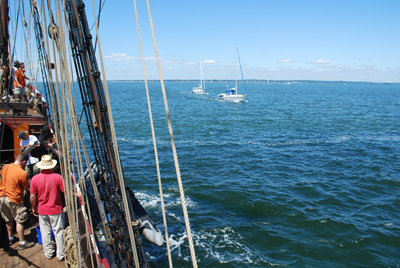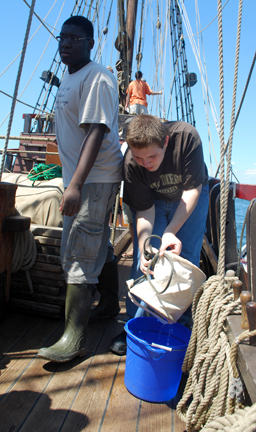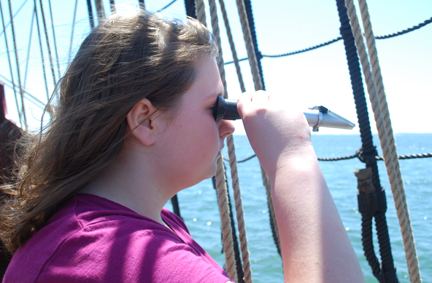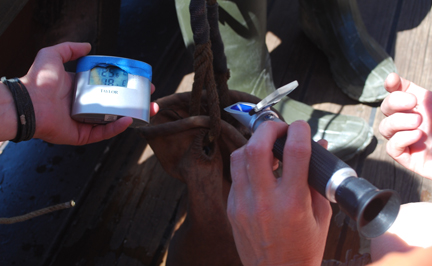 |
|
|
Mouse over to cross the boll.
 |
The Hudson River is an estuary: a freshwater river that flows into the ocean, where it mixes with salt water. The degree of mixture between fresh and salt water is called the salinity gradient. On the Hudson, the salinity gradient at a given location can vary considerably depending on factors such as time of year, tidal flow, and precipitation.
It's a different story on the Connecticut River, and no coincidence that Dutch explorers dubbed it the Fresh River; so much water flows out through it that the river's waters turn completely fresh little more than a mile inland from Long Island Sound.
|

Salinity levels have an immediate effect on the surrounding ecology, since many aquatic creatures can survive only in either marine, brackish, or fresh environments. It's just as important for sailors (of any era), who need a fresh water supply to survive.
To measure the salinity gradient, our students collect water samples at regular intervals. On the Half Moon, we collect surface water samples the old-fashioned way: by simply heaving a tethered canvas bucket overboard and hauling it back on board.
|

Students use a refractometer to measure salinity levels using refraction: the degree to which light bends as it passes through different materials. Saltier water bends light farther than fresher water, so a trained refractometer user can check salinity levels with just a glance.
Sailors on board the original Half Moon in 1609 would have had to simply go by taste.
|

Because the Connecticut River turns fresh so quickly, we can't study it effectively as a student project like we can back on the Hudson (the gradient drops to 0 ppt right away). Instead, on Day Two, as a crew we took measurements of the water temperature and salinity levels just inside and outside the tidal boll (a visible line in the water where two strong currents meet) as we passed the mouth of the Connecticut River. Within a span of just 20 feet, we measured a distinct difference: The waters of the sound were saltier by a difference of 5 parts per thousand.
|
|
|

